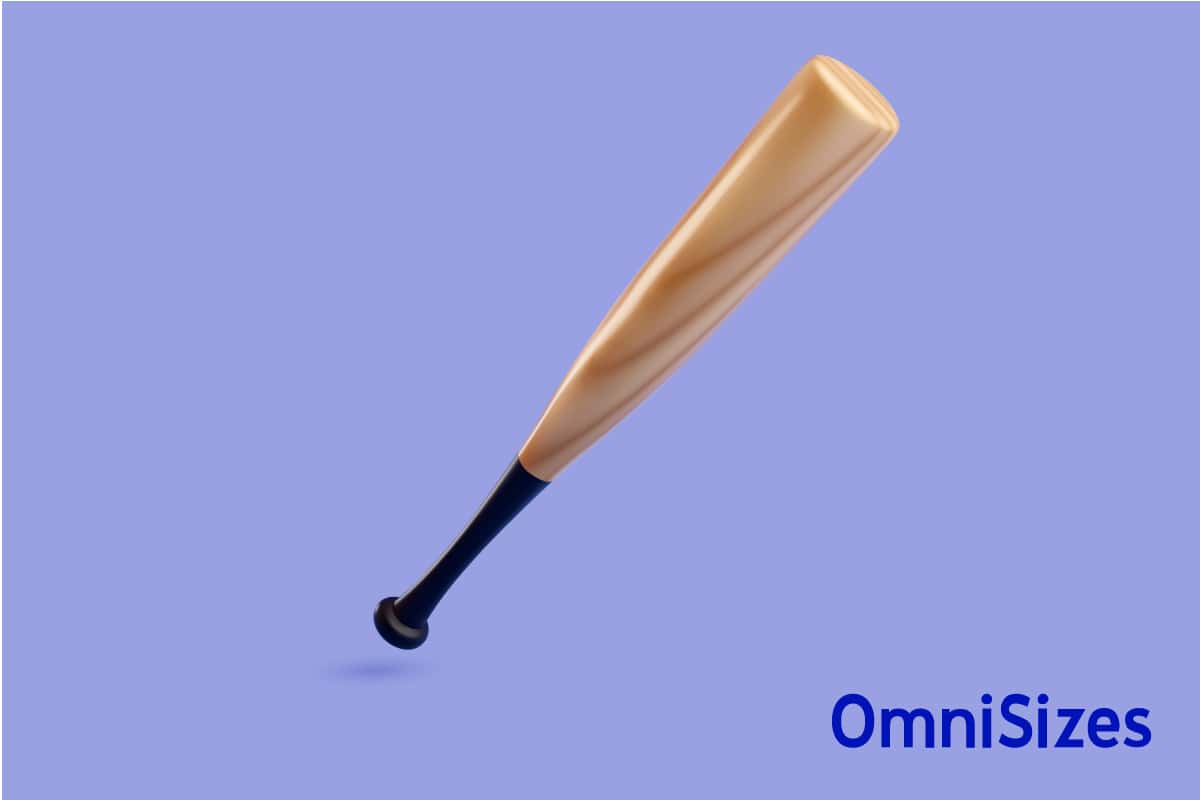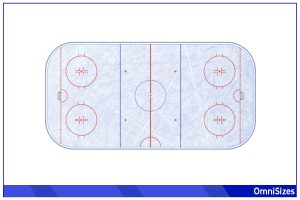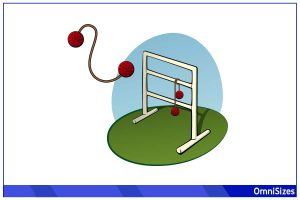Just as a musician selects the perfect instrument or a chef picks the right knife, a baseball player must choose the appropriate baseball bat size for peak performance and success on the field.
A typical baseball bat for adults measures around 34 inches in length and 2.41 inches in diameter. However, variations exist for youth and other leagues, with sizes adjusting according to age and league specifications.

This guide will explain how baseball bats are sized, how they are sized based on age groups, and how to test a bat’s size for the right fit.
Basics of Baseball Bat Sizing
Baseball bat size can significantly enhance a player’s performance on the field. A well-fitted bat can boost a player’s confidence, swing speed, and contact quality.
Length
The length of a baseball bat starts from the base of the knob and extends to the top of the barrel. The right bat length is often influenced by a player’s height and age. For instance, a taller player typically benefits from a longer bat, while younger players may find shorter bats more manageable.
Diameter
The diameter of a baseball bat refers to the thickness of its barrel. It can influence the bat’s sweet spot, which is the prime hitting area on the barrel. A larger diameter might offer a bigger sweet spot, but it also means a heavier bat.
Weight
A bat’s weight should correspond to the player’s strength and their capacity to control the bat during a swing. Bats made of wood, popular in professional leagues, are generally heavier than their aluminum or composite counterparts.
Drop Weight
Drop weight represents the ratio between the bat’s length and its weight. A higher drop weight indicates a lighter bat, making it easier to swing. Conversely, a lower drop weight suggests a heavier feel to the bat.
Baseball Bat Sizes by Age Group
One of the simplest ways to narrow down baseball bat sizes is by focusing on age-appropriate sizes. Age often dictates the general size and weight requirements, so players get the maximum benefit from their equipment.
Tee-ball (Ages 4-6)
For budding baseball enthusiasts, Tee-ball bats are crafted to be lightweight and manageable. These bats typically range from 24-26 inches (60.96-66.04 cm) in length and have a diameter of about 2.25 inches (5.72 cm).
They’re built primarily from aluminum or other lightweight materials, perfectly suited to young hands. It’s recommended to choose bats explicitly labeled for Tee-ball to ensure an appropriate fit.
Top Tee Bat Pick: Axe Bat 2022 Avenge Pro
Youth (Ages 7-12)
As children grow, their batting equipment needs to evolve. Bats designed for this age group generally span from 27-31 inches (68.58-78.74 cm) in length with a diameter nearing 2.25 inches (5.72 cm) to 2.75 inches (6.99 cm).
These sizes consider their increasing strength and dexterity. Players at this stage might explore bats made of different materials like composite or hybrid, allowing them to gauge which they prefer.
Top Youth Baseball Bat Pick: Marucci CAT9 Pasttime USSSA
Teenagers (Ages 13-16)
With the onset of teenage years and more competitive play, bat requirements shift. Bats suitable for this age bracket usually measure between 29-33 inches (73.66-83.82 cm) in length, with a diameter around 2.5 inches (6.35 cm) to 2.75 inches (6.99 cm).
Given the increased strength of players in this group, bats with a balanced weight distribution are preferred. Please make note of league-specific regulations, as some might have restrictions on bat materials or sizes.
Top Youth Baseball Bat Pick: MARUCCI CATX Composite USSSA Bat
Adults (Ages 17 and above)
For adult players, bats are tailored to their full physical development and skill set. These bats can vary extensively, but most fall between 32-34 inches (81.28-86.36 cm) in length with diameters ranging from 2.5 inches (6.35 cm) to 2.75 inches (6.99 cm).
Many professional adult leagues favor wooden bats, offering a distinct feel, while aluminum and composite variants are popular in amateur circles. Adults should select bats that resonate with their playing technique, be it power-centric or aimed at consistent contact.
Top Adult Baseball Bat Pick: Rawlings 2018 Velo BBCOR Baseball Bat
Tips to Test the Perfect Bat Size
While age and standard measurements offer a starting point, personal comfort and feel are equally significant. Here are some hands-on tips to help players find their ideal bat size.
1. Balance Test
Hold the bat with one hand, gripping the base of the handle. Extend your arm out to your side, keeping it parallel to the ground. If you can hold the bat in this position for about 15 seconds without excessive shaking or discomfort, the bat’s weight might be suitable for you.
2. Swing Test
Take a few swings with the bat. It should feel comfortable and controlled throughout the entire motion. If the bat feels too heavy or light during the swing, consider trying a different weight. Remember, a smooth swing can often lead to better hits.
3. Knob Test
With your leading hand, grip the bat’s handle. There should be a gap roughly the width of a thumb between the top of your hand and the bat’s knob. This space ensures the bat isn’t too long, which might hinder swing control.
4. Tap Test
Gently tap the bat’s barrel against the ground. If it feels painful or sends a jarring shock up your arm, the bat might not be the best fit. A good bat should feel solid but not cause discomfort upon impact.
FAQs
1. What are MLB baseball bat dimensions?
MLB baseball bats typically range from 33 to 34 inches (83.82 to 86.36 cm) in length. As for the diameter, they’re about 2.61 inches (6.63 cm) at their thickest part. These bats are usually made of wood, with maple, ash, and hickory being the most popular choices.
2. What if I’m between two bat sizes?
If you’re between two bat sizes, start with the shorter, lighter option. This can provide better control and ease of handling. As you grow more comfortable and gain strength, you can then transition to the longer bat. Personal preference plays a role, so test both sizes to see which feels more comfortable during swings.






